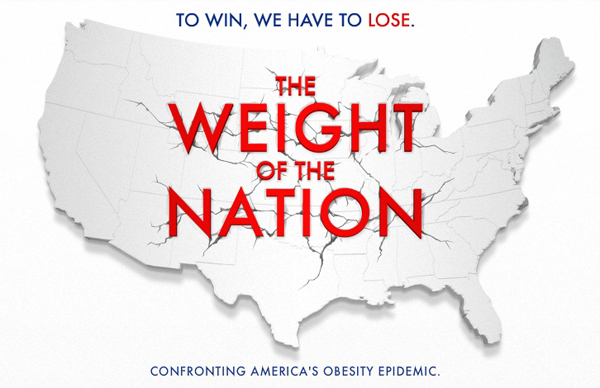Weight of the Nation series highlights transportation’s potential to help fight obesity
HBO’s new film series highlights the shocking state of our country’s obesity levels and worsening health, highlighting the impacts of the transportation systems we build and where we live on those alarming trends. An influential public health expert weighs in for T4 America on the movie and the connections to transportation.
Ed Note: This guest post comes from Susan Polan of the American Public Health Association, a T4 America partner. You can also watch Weight of the Nation for free in its entirety on the HBO website.
by Susan Polan, PhD
With the launch of the four-part Weight of the Nation film series on HBO, the nation is getting another stark reminder that our health is impacted by how our communities are designed. Too many of our communities are sorely lacking opportunities for safe walking and biking or good access to public transportation. The film confirms this reality. We have engineered physical activity out of our daily lives and Americans spend approximately 100 hours each year commuting.[1]

The consequences from a lack of physical activity in communities across the U.S. are shocking. In January 2012, the Centers for Disease Control and Prevention released a survey of America’s health, which showed that almost 32 percent of 2- to 19-year-olds and nearly 69 percent of adults in America are overweight or obese.
According to the film series, when it comes to obesity and its related diseases, such as diabetes, heart disease and cancer, evidence shows that “your zip code may matter more than your genetic code.” Furthermore, the nation’s most vulnerable groups – such as children, low-income households, communities of color – typically bear the greatest burden of these negative health impacts.
But it’s not all bad news. Because the choices we make about what kind of transportation systems to build can have the power to improve the public’s health when they make it easier for families to safely walk, bike or conveniently reach public transportation. According to the Weight of the Nation series, a “great way to increase your physical activity is to find active ways to get to work, to school, to the store, or to any other place you go.”
At the very moment that Congress is debating whether or not to preserve programs like Safe Routes to School and others designed to help communities provide more travel options and make walking and biking safer, consider the potential benefits if we make those things a priority:
- Active commuting that incorporates cycling and walking is associated with an 11 percent reduction in cardiovascular risk [2];
- Teenagers who bike or walk to school watch less TV and are less likely to smoke than their peers who are driven to school, in addition to getting more overall physical activity daily [3];
- Public transit users spend roughly eight more minutes walking each day than drivers [4].
By providing more safe transportation options that can be accessed by all users – across ages, incomes and abilities – we improve the community’s health and all-around quality of life. Considering the incredible levels of obesity in America highlighted by the films, why wouldn’t we prioritize the very strategies that can reduce the obesity rate and increase opportunities to incorporate physical activity into our daily lives, — whether that’s trails for runners, bike lanes for commuters or sidewalks for a stroll to the store?
America needs major infrastructure investment in the coming years and HBO’s powerful Weight of the Nation series helps reinforce why the decisions we will make about those transportation investments must consider the impact on health for our families today and for the kids of future generations. The anticipated reauthorization of the federal surface transportation bill provides us with an ideal and timely opportunity to support – not harm – the nation’s health.
In the 49th minute of Part 4, “Challenges,” Nashville Mayor Karl Dean talks about investing in a cleaner, safer, more walkable city.
[1] United States Census Bureau. Americans Spend More Than 100 Hours Commuting to Work Each Year, Census Bureau Reports. Newsroom 2005.
[2] Hamer, M., and Y. Chida. 2007. Active commuting and cardiovascular risk: A meta-analytic review. Preventive Medicine, 46, 9-13.
[3] Landsberg, B., et al. 2008. Associations between active commuting to school, fat mass, and lifestyle factors in adolescents: the Kiel Obesity Prevention Study (KOPS). European Journal of Clinical Nutrition, 62, 739-47.
[4] Edwards, R. 2008. Public Transit, Obesity, and Medical Costs: Assessing the Magnitudes. Preventative Medicine, 46(1): 14-21. January 2008.




















Pingback: The Bike Pittsburgh Blog Archives » Week’s Links: 6.15.12